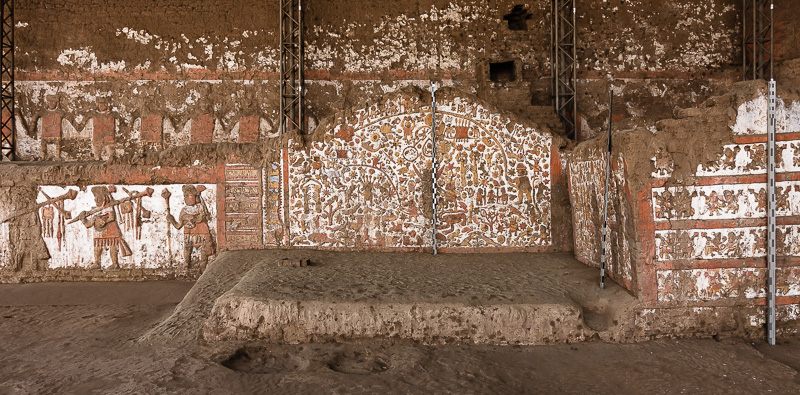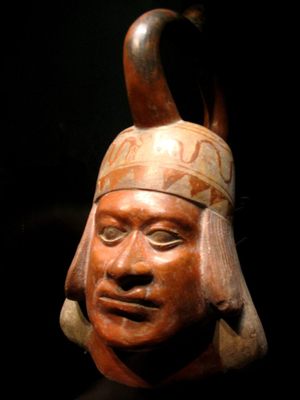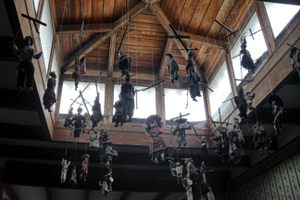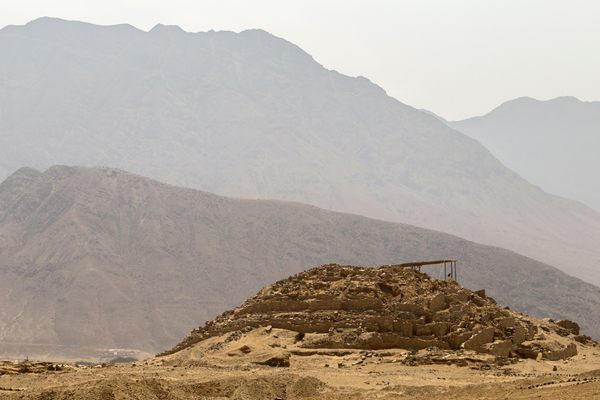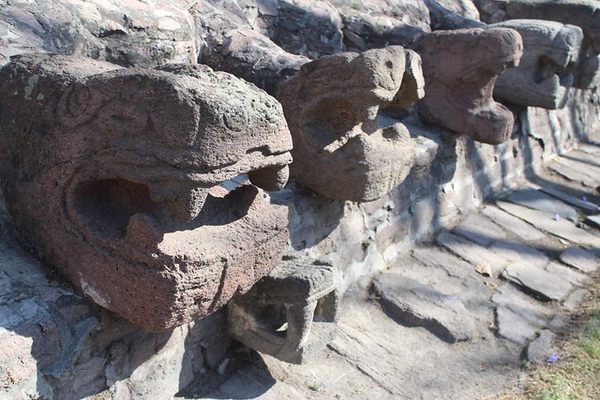About
You might expect that an ancient pyramid built of adobe bricks wouldn’t hold up well over time, that wind and rain would erode it over the centuries. But excavators digging into the Huaca de la Luna (Temple of the Moon) in Moche, Peru, found that inside the pyramid's deteriorated exterior was a series of earlier and smaller pyramids that had retained not only their stepped shape, but their colorful friezes as well.
The northern Peruvian Moche Empire lasted from about 100 to 700 A.D. and was centered at a complex called Huacas del Moche, located about three miles from modern-day Trujillo near the mouth of the Moche River Valley. The bone-dry coast of Peru where the Moche farmed can be harsh and unforgiving, so the Moche did everything they could to help ensure the success of their crops of beans, corn, and potatoes. This included engineering a sophisticated system of irrigation canals and, to appease the gods that controlled the weather, huge temples and blood sacrifices. The priests oversaw ritual one-on-one battles between their warriors, then slit the throats and drank the blood of the losers. Warriors captured from battles with neighboring groups were similarly sacrificed.
Graphic evidence of these sacrifices is recorded on enormous stretches of pyramid friezes and also on the masterfully crafted ceramics excavated from the Huaca de la Luna site. The friezes include representations of the creator god Ayapec, who sometimes resembles a half man-half jaguar and other times is depicted as a horrific spider-like creature frequently referred to as “The Decapitator.” It should be noted at this point that the priests ritually consumed San Pedro cactus, which contains the hallucinogenic drug mescaline. This may help explain the nightmarish nature and appetites of the deities they communed with as well as the intense palette of colors displayed on the pyramid’s facade.
Sadly, all the sacrifices seemed to be for naught. Studies of ice cores drilled from Andean glaciers indicate that starting around 536, a super El Niño period caused 30 years of intense rain followed by 30 years of drought. The Moche eventually abandoned the site and resettled in the Lambayeque Valley to the north. Later the area was populated by the Chimu people and, in the 15th century, by the Inca civilization. The Spanish arrived on the scene in the 16th century, but only to rechannel the Moche River so they could blast open and loot the nearby and larger Huaca del Sol (Temple of the Sun). The site then was largely abandoned until professional archeologists began excavations in the 1990s.
The Huacas del Moche site has only been open to tourists since 2011. Significant stabilization, excavation, and restoration efforts are ongoing.
Related Tags
Know Before You Go
A 10-minute walk from the site is the Museo Huacas de Moche, containing exhibits explaining the Moche culture. The nominal entrance fee includes an English- or Spanish-speaking guide. Visit the museum before heading over to the Tourist Reception Area for the Huacas del Moche site, where you can, and definitely should, hire a certified guide.
Peru: Machu Picchu & the Last Incan Bridges
Discover Inca Wonders.
Book NowPublished
October 4, 2019

